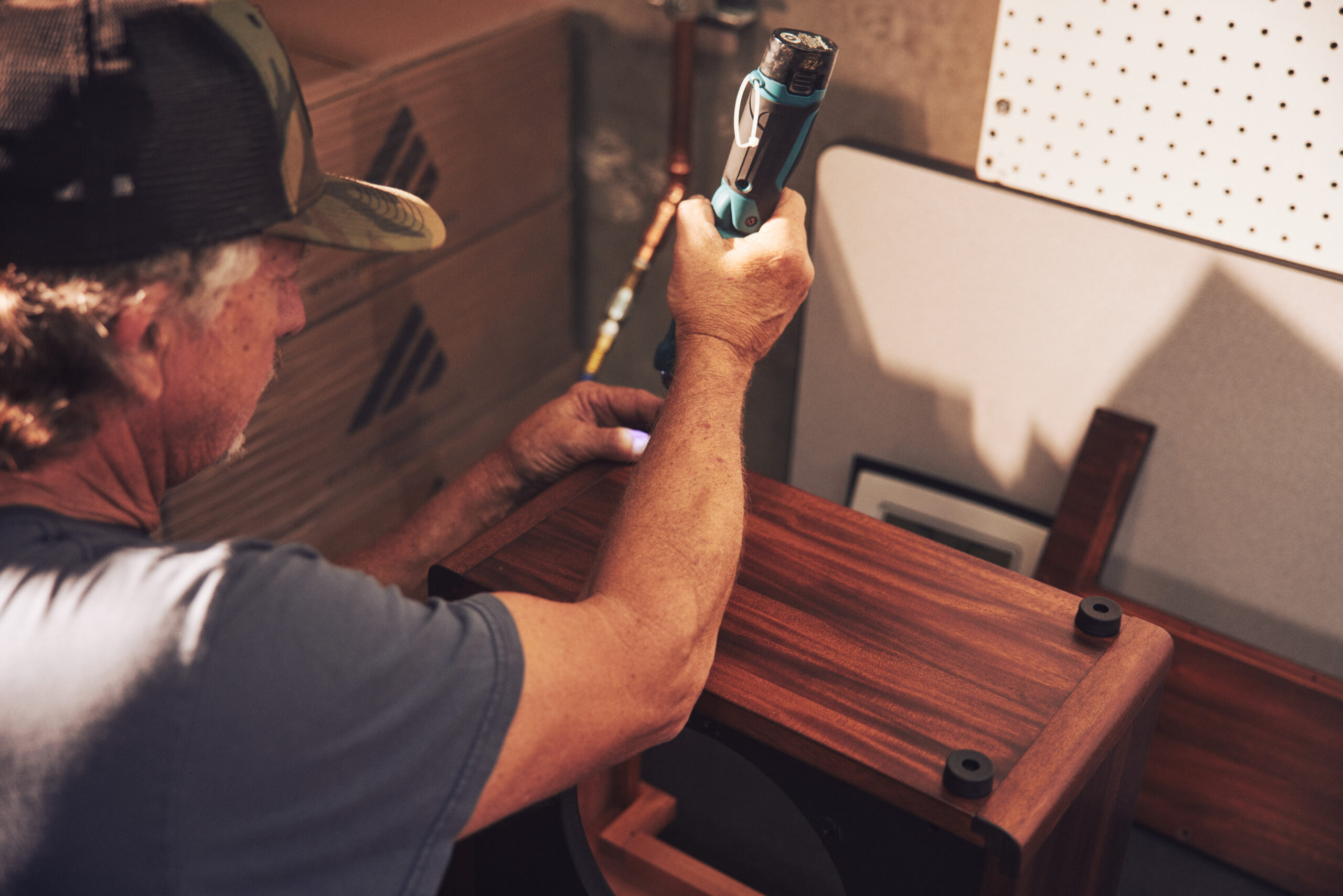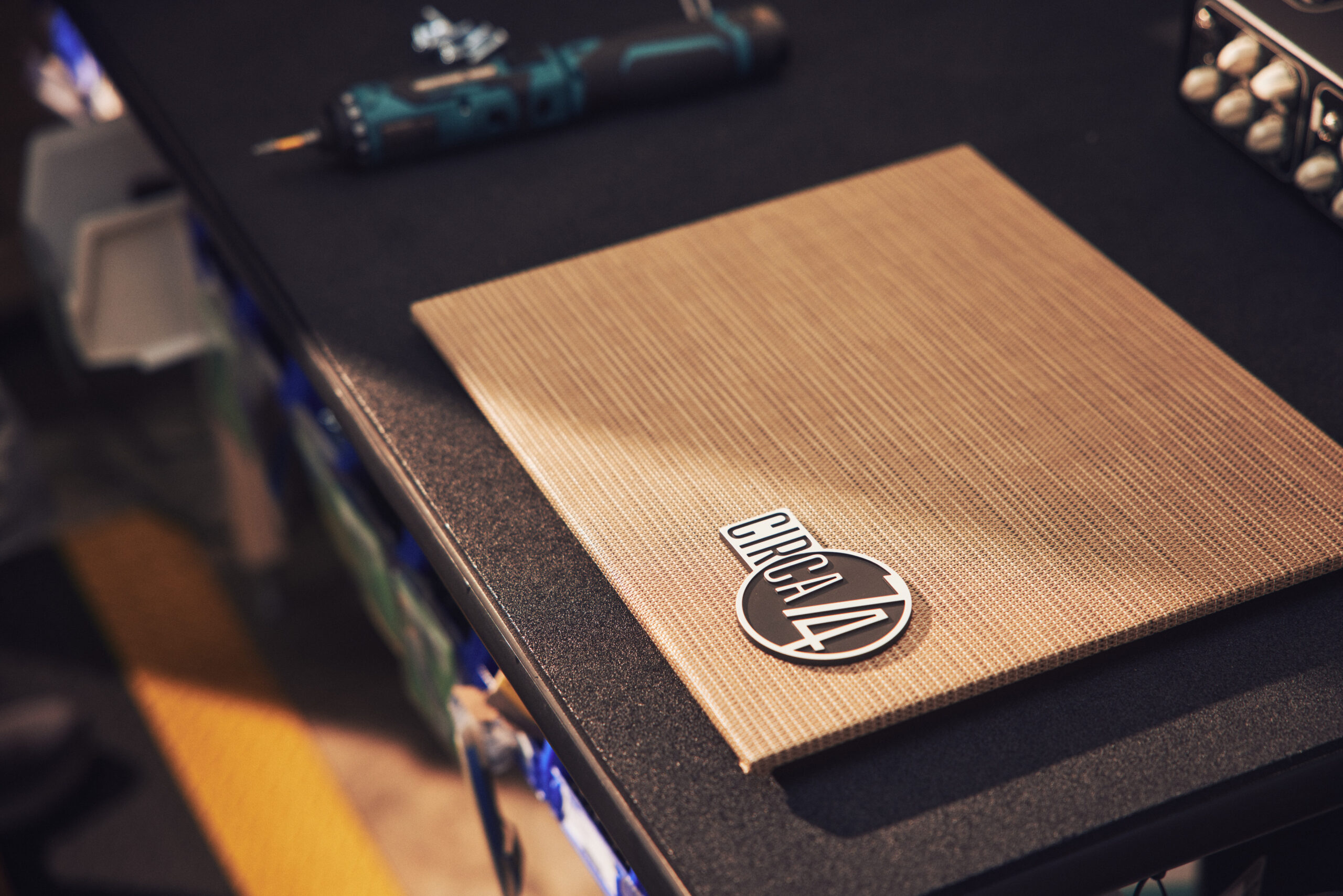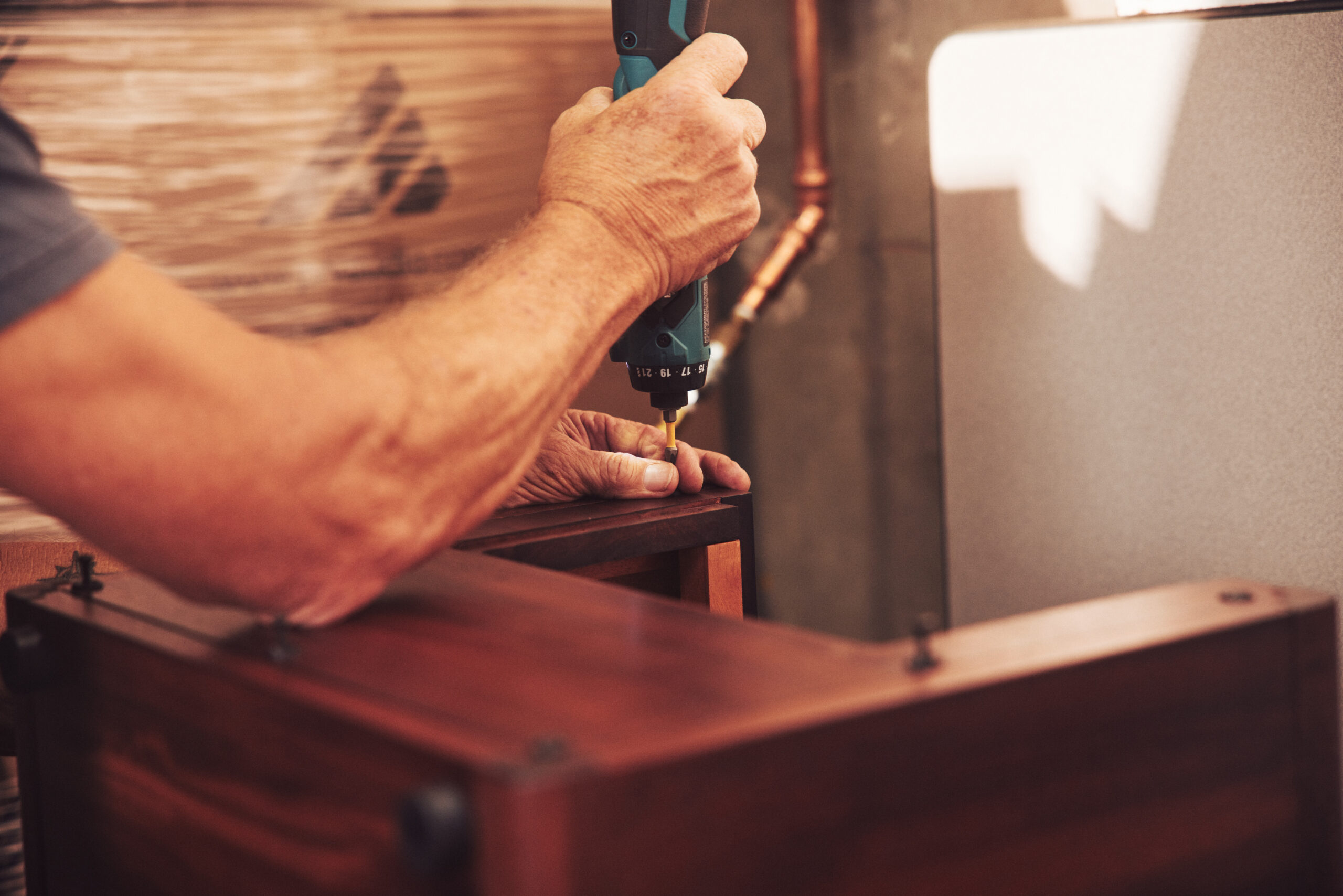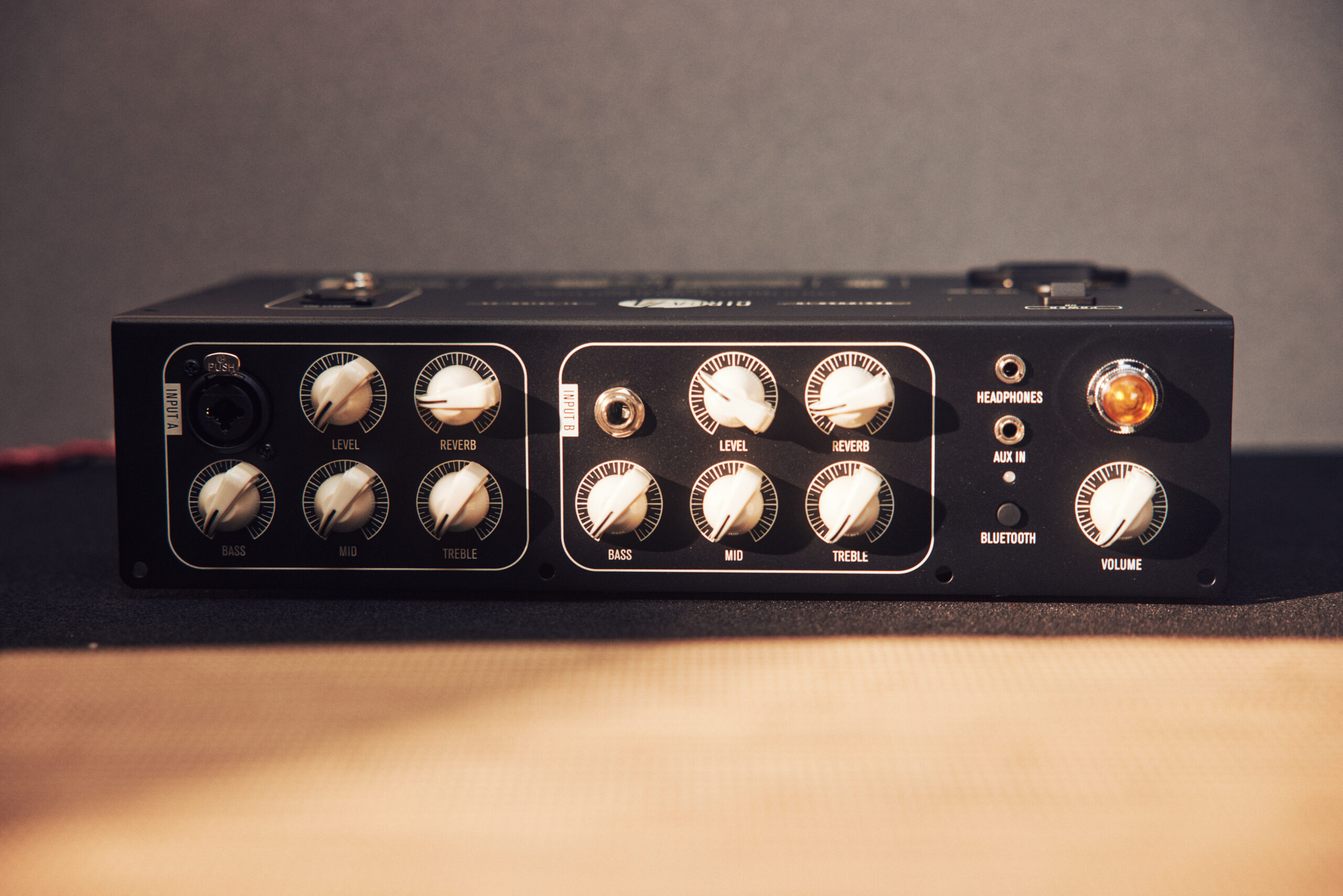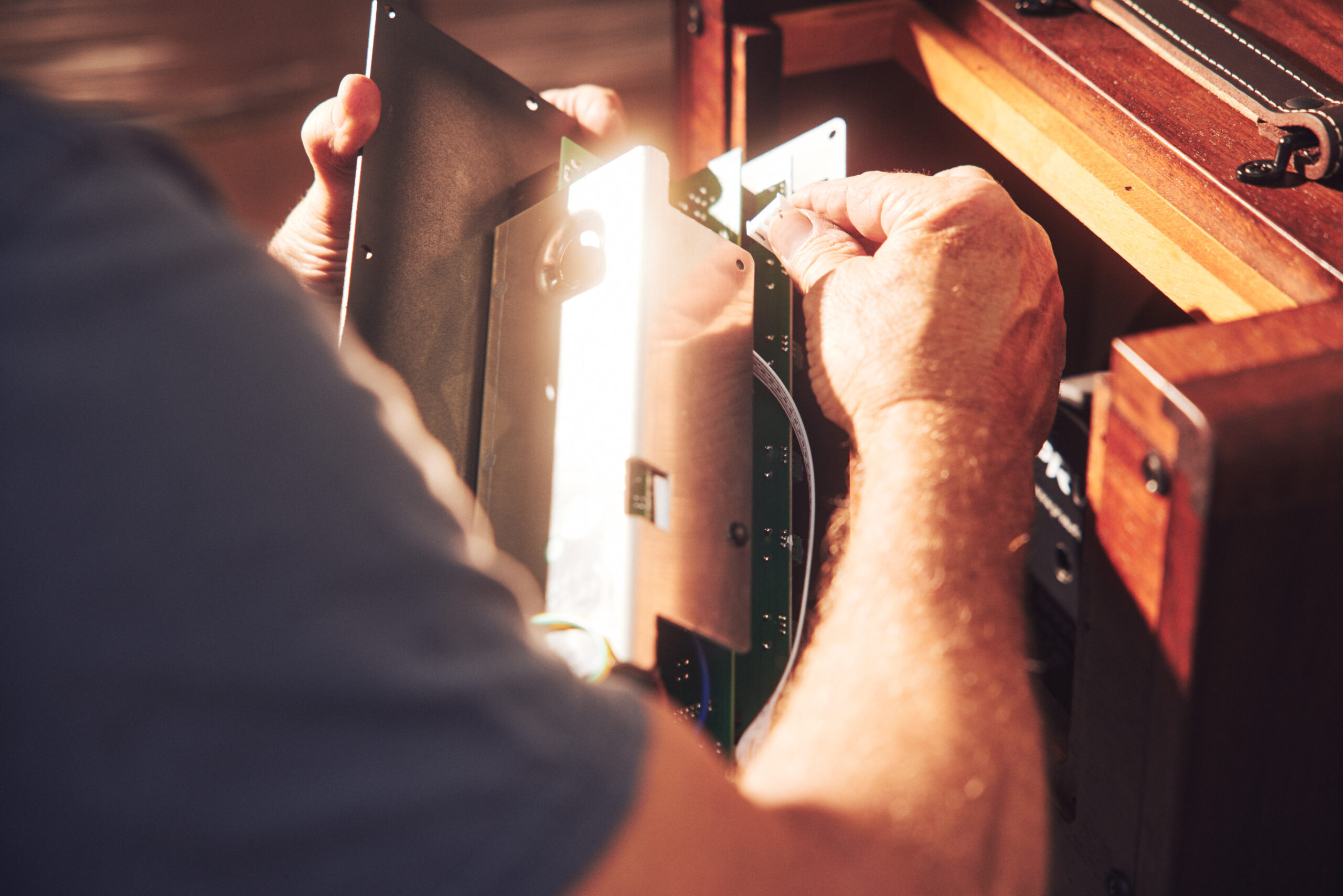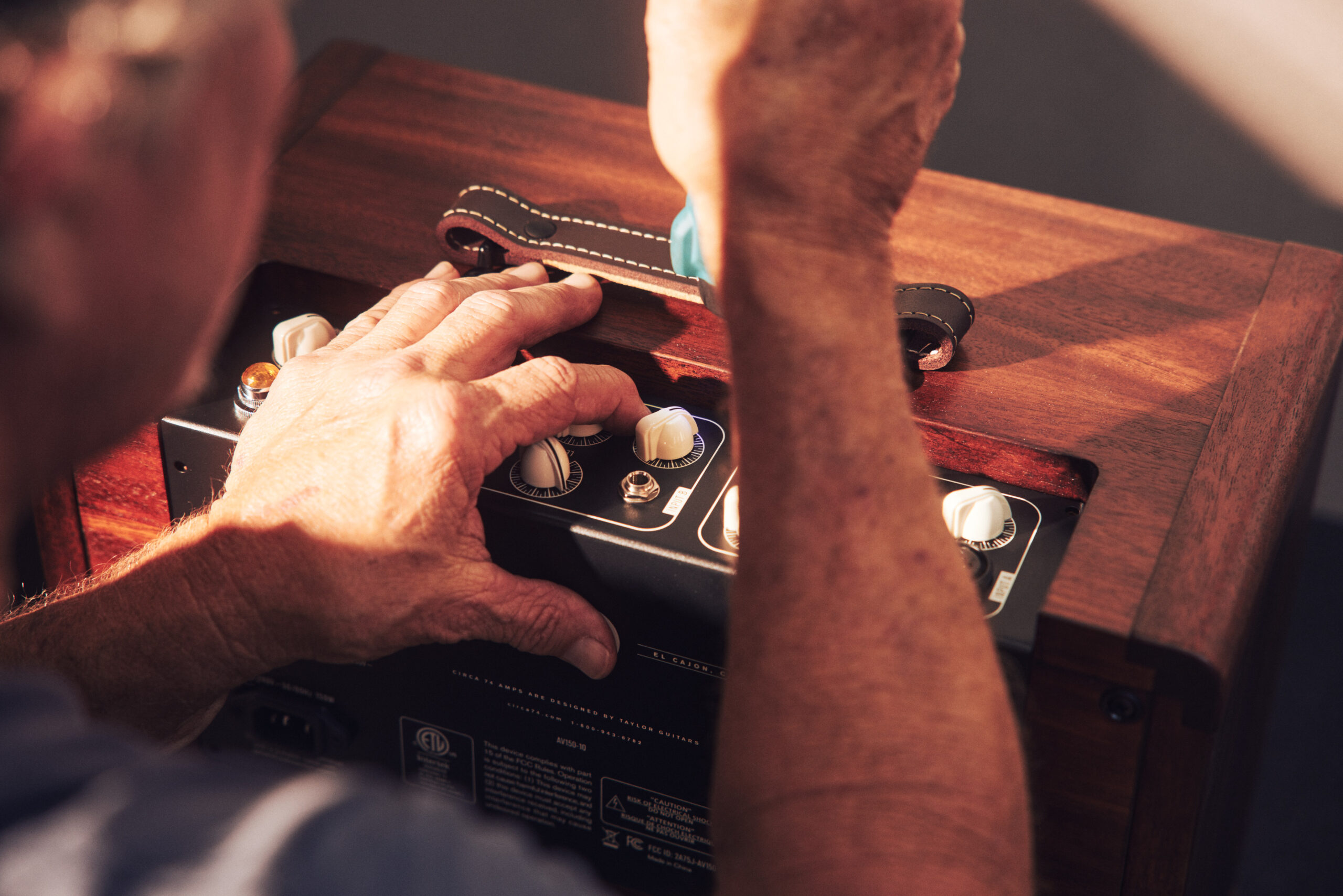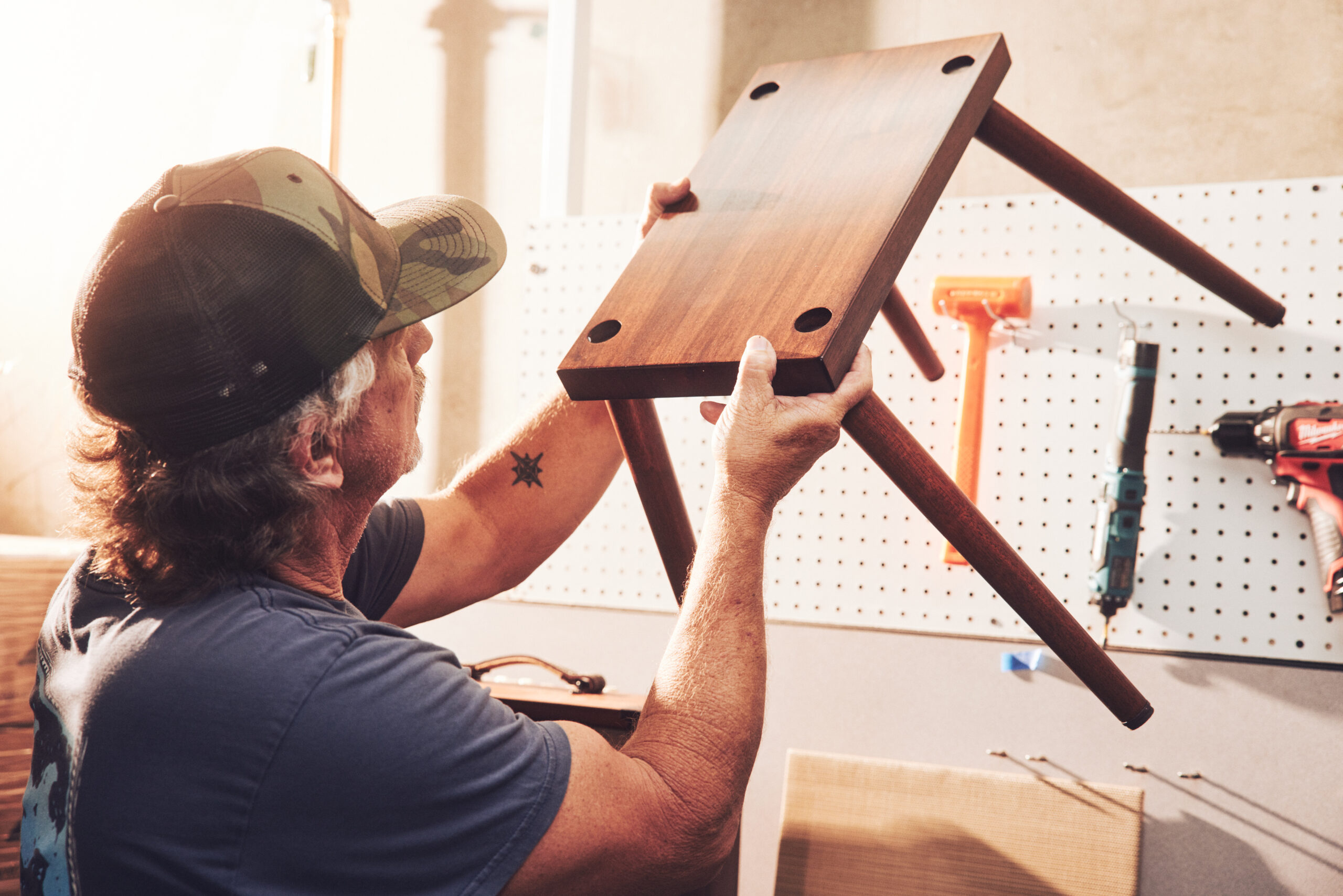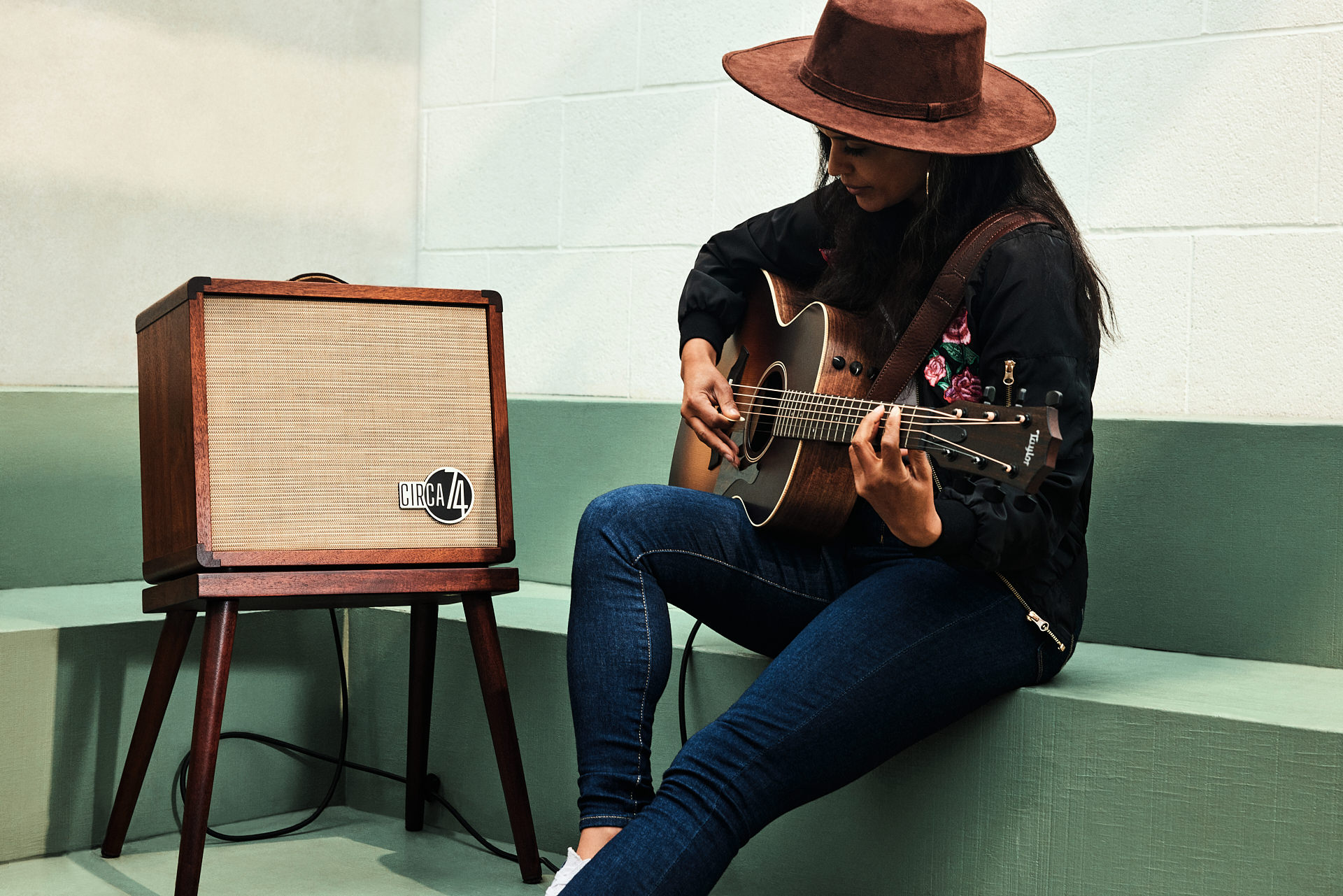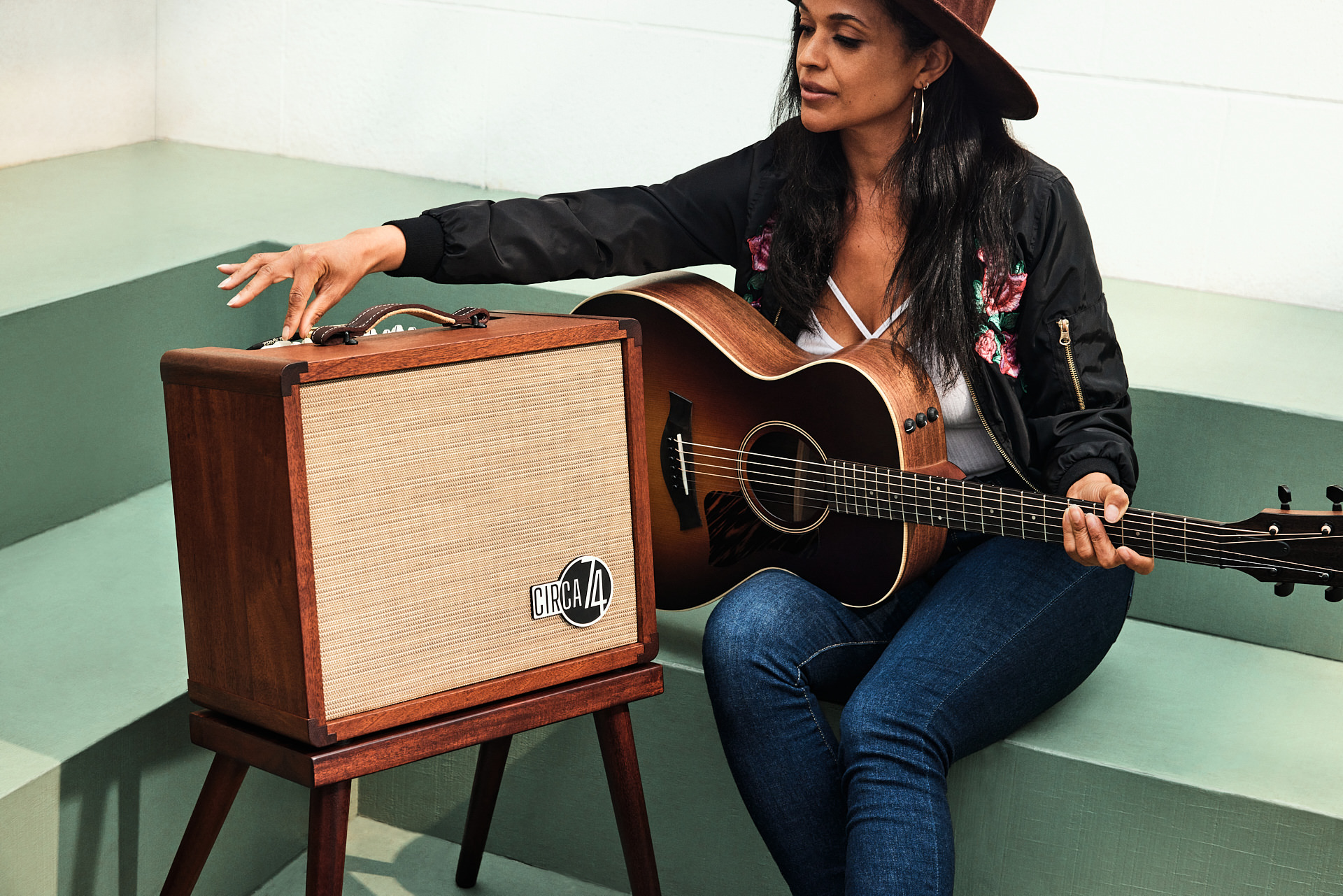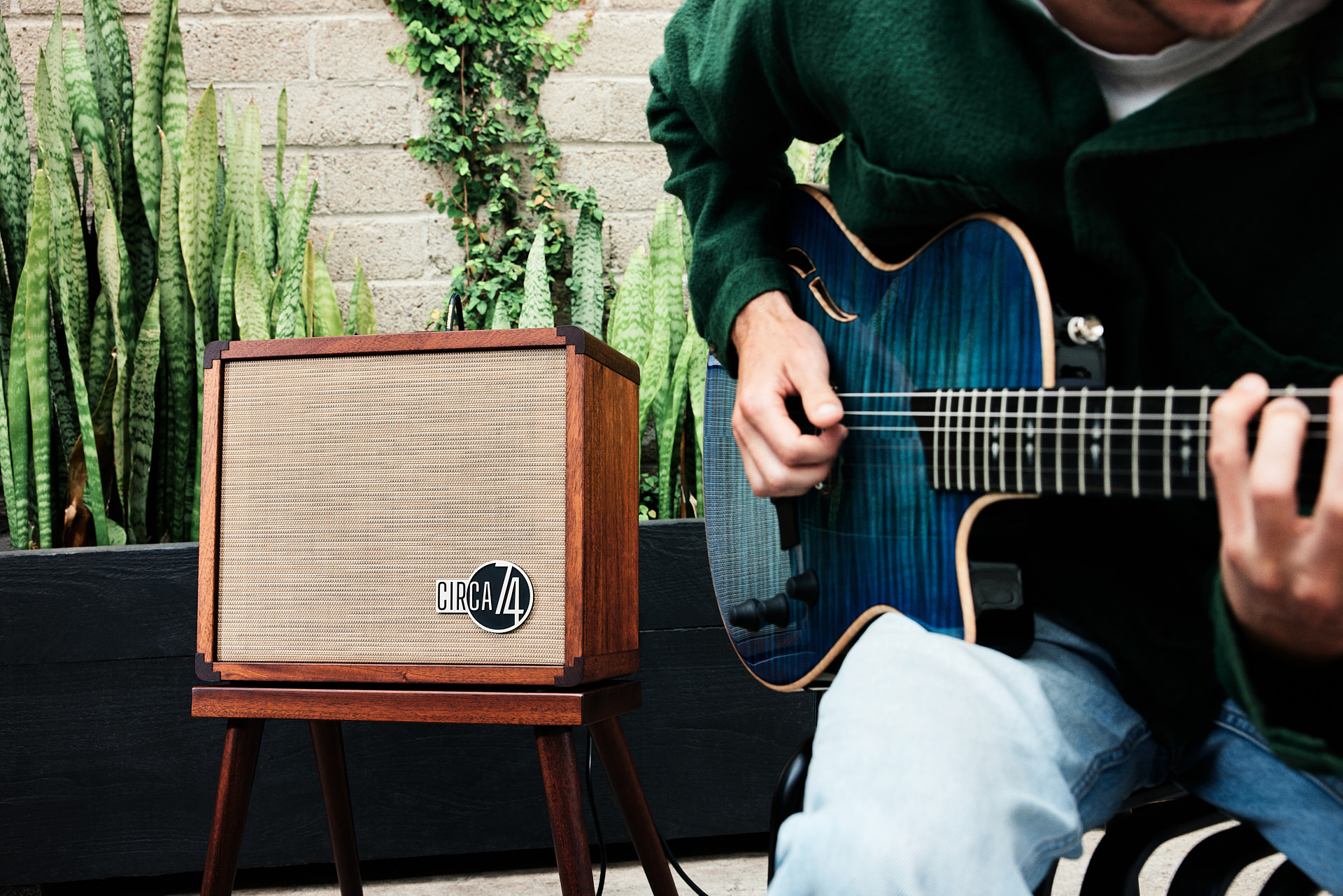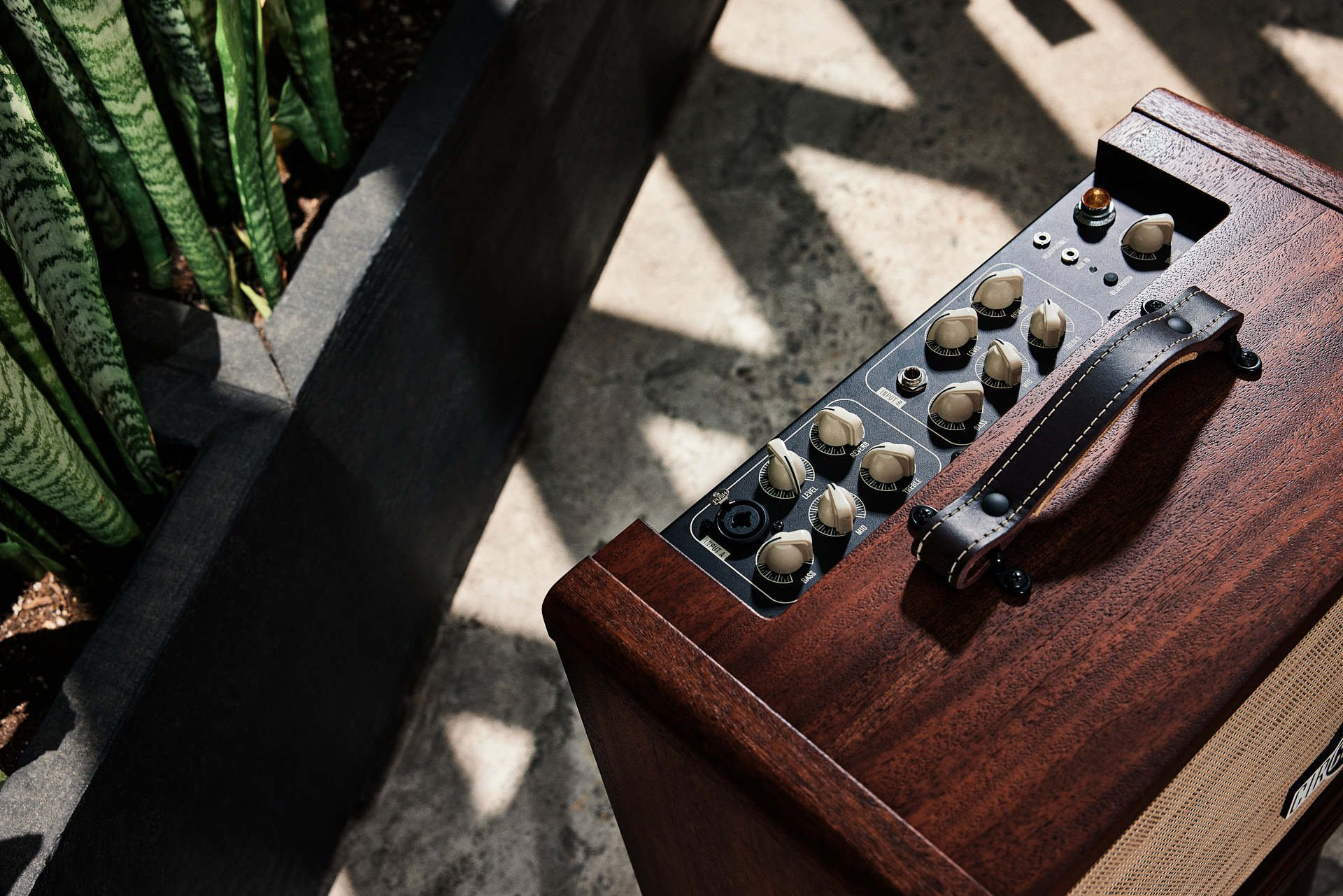It’s spring 2020, a pandemic has gripped the country, and guitar production at the Taylor factory is on hiatus. Bob Taylor has been spending time roaming the now oddly quiet buildings on campus with chief guitar designer Andy Powers, surveying the company’s wood inventory (especially with the supply chain now disrupted) and discussing various design projects. One is a new guitar series Andy has started working on, spurred by the circumstances, which will soon launch as the American Dream Series. Another is an idea Bob is interested in exploring: making acoustic amplifiers.
The two projects could not be more different in their timelines. There’s a sense of urgency attached to Andy’s guitar design — fueled by a desire to bring something to market quickly once the El Cajon factory reopens, in response to the growing demand for guitars as people find themselves spending more time at home.
The amp project, in contrast, has no timetable. It’s more of an offline pursuit, without the pressure to bring a product to market to support the business. Bob’s a maker by nature; if you talk to him, you learn he’s always building something. The common thread in all of his efforts is that he finds joy in designing and building quality things that are both beautiful and functional, whether it’s guitars, furniture, cutting boards or…amplifiers. In this case, the amp project gives him the creative freedom to experiment with different ideas in an organic way with more of a guerrilla, small-shop mentality.
Assembling His A-Team
To help bring the project to life, Bob enlisted three sharp thinkers with complementary skill sets from Taylor’s product development team: Tyler Robertson, a robotics engineer, guitar player and electronics and amp expert; Terry Myers, a seasoned guitar player, builder/repairer and amp guru who has worked at Taylor for over 30 years and knows the trials and tribulations of getting a good amplified acoustic sound; and David Judd, a remarkably versatile craftsman who has been a vital part of our prototyping team for decades and has worked on the design team for Taylor’s Expression System acoustic electronics.
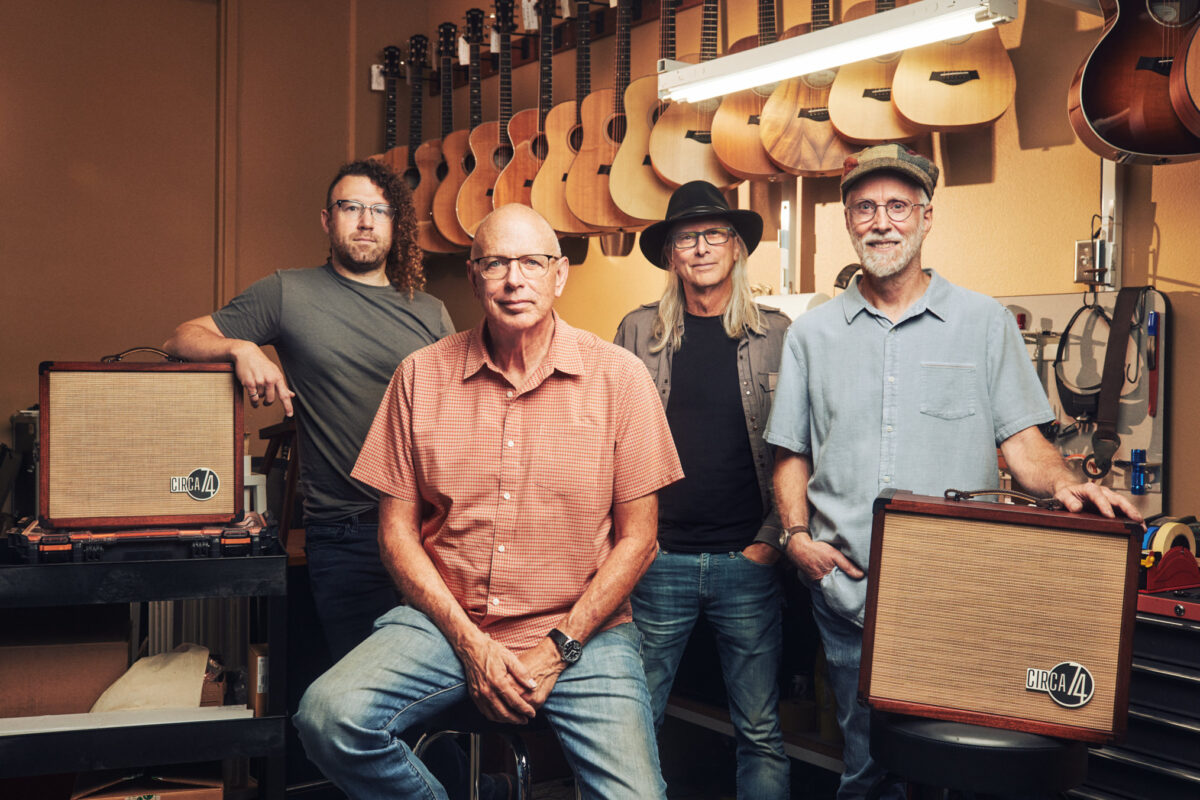
From left to right: Tyler Robertson, Bob Taylor, Terry Myers, David Judd.
Reframing the Role of an Acoustic Amp
Bob says his thinking around an amp design centered on serving the practical needs of players but had started with an interesting point of view.
“Initially, I found myself questioning the utility of an acoustic amp,” he shares. “I’m thinking, who uses them and for what?”
He clarifies that he’s talking about gigging musicians like his longtime friend and brother-in-law Mike who both sing and play acoustic guitar, or players who perform with a singer in small venues.
“Any place you would go to perform with an acoustic guitar and would need an amp, you’d also need a PA for whoever is singing,” he says. “So, why not just plug the guitar into the PA? That’s the right solution for an acoustic guitar in that situation.
“The only reason my brother-in-law would need a guitar amp would be if he could sing through it too,” he explains. “If he can’t, he’ll never have an acoustic guitar amp. He’ll take his Bose Stick L1 and plug his guitar and vocal mic into it. But what if he had an amp that was super portable, with enough power to fill a room and that was capable of making both his guitar and voice sound good?”
Bob and his team immersed themselves in the R&D process, talking about the sonic and other qualities they felt were important and the shortcomings of some of the products in the market. They listened to a range of different acoustic guitars with different pickups plugged into different systems. They compared and eventually found the amp chassis they wanted and started modifying it. They also tested a lot of speakers.
“We liked the ones that had some warmth to the sound rather than studio-monitor clarity,” he says.
The Pursuit of a Warm-Clean Sound
Many of today’s acoustic amps are designed to prioritize accuracy — but as plenty of players and recording pros will tell you, accuracy doesn’t always translate to a musically appealing result for listeners. Because of how most acoustic pickups work, many amps yield a “gainier” sound than players would like, relaying a great deal of treble-range detail but losing the warmth that makes an acoustic guitar so musically appealing in the first place.
“Many modern acoustic amplifiers can sound clinically reproductive in their tone,” Tyler Robertson says. “You’re hearing a faithful reproduction of the pickup, but not a great version of the guitar.”
Bob agreed.
“Along the way, we worked with some audio engineers who were sending us oscilloscope readings of how clean their amp is. But a customer isn’t buying an oscilloscope reading; they’re buying something that sounds good.
“We wanted to design our amp to sound clean, but not cleaner than clean,” he adds. “It’s made to be on the analog side of clean…not studio-monitor clean, but beautifully warm-clean.”
Terry Myers was on the same page.
“We designed it with an appreciation for the human listening experience,” he says. “It was informed by the pleasure of listening to records from the ’60s and ’70s.”
A Wood Cabinet
As a guitar manufacturer, Taylor was in the unique position of having an inventory of tonewoods, and especially as a skilled woodworker, Bob had always envisioned the amp featuring an elegantly crafted wood cabinet. In his factory walkabouts during the pandemic, he rediscovered some additional stocks of mahogany whose dimensions weren’t suitable for guitars. Putting those pieces to use, the team built some amp prototypes with solid mahogany cabinets, experimenting with different wood thicknesses.
“We came to appreciate that mahogany has a sound in this context too,” he says. “It’s something you don’t realize unless you make a bunch of different mahogany cabinets like we did.”
Those sonic characteristics played into the warm, smooth character they wanted in the amp’s sound.
An Amp for All Occasions
As Bob and the team bounced ideas around and refined their amp prototypes, the freeflowing creative vibe of the project reminded Terry of the early days of Taylor Guitars as a small shop, and he coined the name Circa 74 (a reference to the year the company was formed). It stuck.
They continued to distill the sound, look and functionality of the amp. Beyond the warm-clean sound and the ability to support a guitar and a singer, they wanted it to be portable yet powerful enough for working musicians. That meant packing serious wattage into a small cabinet so players could use it in any space, from basements and living rooms to cafés, recording studios and live venues. The team landed on a class-D solid state amp with 150 watts of power, giving it an expansive, room-filling voice that doesn’t lose clarity or warmth with the volume cranked.
They also wanted to offer broad versatility, so they designed it to be compatible with all major guitar pickups. (The final version includes suggested EQ presets for Fishman, Baggs and K&K systems along with Taylor’s ES2, as well as common microphones from brands like Shure and Electro-Voice for vocals.)
Another aim was to make the amp easy to use, with intuitive controls, rather than over-engineering it.
“We specifically wanted the features to be inviting to new players or people who don’t need a ‘spaceship,’” Tyler says. “We didn’t want an extensive set of features getting in the way of being able to walk up, plug in and sound good with any guitar, any pickup.”
The amp boasts two input channels: one XLR/quarter-inch that can handle either a microphone or a guitar cable and one quarter-inch input specifically for guitar. Both feature simple independent channel level, volume and EQ controls that make it easy to dial in your sound for any scenario, plus simple room reverb and a master volume knob. It also includes a 1/8-inch line-level aux input for additional effects and Bluetooth connectivity for streaming recorded music.
Compatible with Modelers and Effects
Expanding on the amp’s versatility, the team also made sure the amp could be used not just with a standard acoustic-electric guitar, but also with modelers and effects. Digital sound has grown in both quality and popularity over the last decade or so, with players of all types keying in on the practicality and convenience of using rack- or pedal-based modelers to produce virtually any tone profile. As Tyler explains, the design team ensured that players could use the Circa 74 amp in whatever way works best for the individual musician, including those who rely on digital technology.
“It’s very functional as a full-range amplifier for modeling setups,” Tyler says. “The aux-in bypasses the preamp and reverb, so it won’t affect the sound of your modeled amplifier or cabinet IR.”
And at just 24 pounds, it’s easy to transport.
“Many modern acoustic amplifiers can sound clinically reproductive in their tone. You’re hearing a faithful reproduction of the pickup, but not a great version of the guitar.”
Tyler Robertson
Midcentury Vibes + a Stand
With his guitar designs, Bob Taylor has always taken great pride in creating an elegant, uniquely appealing aesthetic, from the curves of Taylor’s family of body shapes to our bridge, peghead and pickguard designs.
“It’s not in my nature to make something that sounds beautiful that doesn’t also look beautiful,” he says.
That same mindset informed the aesthetic design of the Circa 74 amp. Surveying some of the other acoustic amps in the market, Bob and the team saw this as another opportunity to craft something that would look just as good in a person’s living room as it would on a stage or in a recording studio. They wanted to build an amp you wouldn’t feel the need to move to a back room when guests drop by.
“I wanted the elegant aesthetic appeal of a piece of finely crafted furniture,” Bob says. “Something that looks great in a living room or at a wedding reception or a wine bar.”
The mahogany cabinet, with its rich woodgrain and warm, reddish-brown hues, certainly fits the bill, marrying the vibe of fine furniture with that of a premium acoustic guitar. The light brown grille cloth, leather handle and vintage-style control knobs add other modern-retro touches.
Finally, the team found an opportunity to enhance both the amp’s musical functionality and aesthetic appeal with the design of a stand to be included with the amp. Taylor’s David Judd led that effort.
“Amps just sound better when they’re off the ground, so we tried several different styles of construction before this design,” Judd explains.
The matching mahogany stand features screw-in legs for easy disassembly if needed, a slightly angled orientation for an upward tilt to enhance projection, and routed footholds that keep the amp securely in place. Between the warm wood tones and seamless marriage of form and function, the amp and stand make an elegant Craftsman-style presentation.
“This one was ‘spouse-approved’ to stay in the living room, not just the music room,” Judd says.
After nearly four years of development and field testing in different performance settings — including a lot of use by Bob’s brother-in-law, who loves his — the Circa 74 amp made its official debut in January and has been well-received by Taylor dealers.
Early Reactions
Taylor District Sales Manager and gigging player Rich Casciato has been using his Circa 74 amp at shows, and his report sums up the experience well.
“What I love about it is that it doesn’t sound like an ‘amplified’ acoustic guitar — it just sounds like a louder acoustic guitar,” Rich says. “That’s exactly what I was hoping for.”
Over at Guitar Player magazine (April edition, on newsstands March 1), reviewer Jimmy Leslie gave the amp an Editors’ Pick award. He loved the living-room-friendly vibe and the “ingenious” way the amp and stand fit together. He also praised the “flexible and practical” design and enjoyed testing the amp with different guitars and pickups, starting with a Builder’s Edition 814ce equipped with our ES2 electronics.
“The overall sound was very much what one might expect from a flagship Taylor guitar through Taylor amp design: high fidelity, dynamic and very touch responsive,” he writes. “It’s not all in the mids like some acoustic amps, particularly those with small woofers.”
He also liked the way the “shiny-smooth tone” worked with vocals.
“Troubadours will dig how the vocals come across sounding more full like a P.A. than like a lot of other 2-in-1 amps where it gets squished,” he observes.
Leslie also noted the amp’s power and sustain.
“Turn it up, and boy is it punchy. The Circa 74 helps notes sing out with strong sustain. The mahogany cabinet seems to contribute more to the punch and projection as you crank it…. There’s plenty of headroom.”
When he experimented with two other guitar/pickup systems, he felt the amp admirably channeled the sonic character the respective pickups were designed to deliver. He started with a Martin CS-SC-2022 with a Baggs HiFi bridge plate transducer system and a Baggs M1 passive magnetic pickup in the soundhole.
“With all the controls set to noon, the difference between the body energy of the former and the distinct string sound from the latter was very apparent,” he writes. “A few tonal tweaks to home in on the best combination yielded a wonderfully comprehensive sound.”
He also tried an older Taylor 514ce equipped with a Fishman Prefix piezo system plus a Seymour Duncan Active Mag in the soundhole.
“Once again, the distinct qualities of that piezo and the active magnetic were apparent, and I was able to dial in a beautiful blend.”
Ultimately, he sees the amp as a welcome addition to the acoustic amp world.
“It’s especially interesting coming from the team at Taylor, giving it a familiarity factor but also coming kind of out of left field…. The Circa 74 hits a Goldilocks zone in a great size with just the right juice.”
Over time, the plan is to introduce additional versions of the amp crafted with cabinets featuring other acoustic guitar tonewoods. (As an ultra-premium example, see the Hawaiian koa and walnut versions offered in tandem with two of our 50th Anniversary Presentation Series models. [link]) You’ll find Circa 74 amps at select dealers across the U.S., with models slated for release internationally later this year. For more details, including video content, visit Circa74.com.

